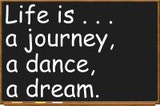 In a comment on a previous post, one TKZ reader asked about romantic suspense. Since I write in that genre as well as mystery, I’ll try to respond.
In a comment on a previous post, one TKZ reader asked about romantic suspense. Since I write in that genre as well as mystery, I’ll try to respond.
At first glance, the answer seems obvious. Romantic Suspense books have both romance and suspense. However, that’s a very broad definition, and in order to write in the genre, one needs to dig a little deeper.
Is it a romance novel with a suspense sub plot?
Or is it a suspense novel with a romance sub plot?
How are they divided? 50-50? 60-40 romance because it’s Romantic Suspense? Or 60-40 suspense because it’s Romantic Suspense? Or something else?
In truth, it’s none of the above, so let’s back up and look at the definitions.
According to the Romance Writers of America (presented long before the recent implosion and I think their definitions/guidelines still hold), a Romance is defined as a novel containing a central love story and an emotionally satisfying and optimistic ending.
A Central Love Story: The main plot centers around individuals falling in love and struggling to make the relationship work. A writer can include as many subplots as he/she wants as long as the love story is the main focus of the novel.
An Emotionally Satisfying and Optimistic Ending: In a romance, the lovers who risk and struggle for each other and their relationship are rewarded with emotional justice and unconditional love.
Romance novels may have any tone or style, be set in any place or time, and have varying levels of sensuality—ranging from sweet to extremely hot. These settings and distinctions of plot create specific subgenres within romance fiction.
One of those subgenres is romantic suspense. What does RWA say about that?
Romantic Suspense: Romance novels in which suspense, mystery, or thriller elements constitute an integral part of the plot.
You’ll notice the definition does not single out suspense. Instead, it adds mystery and thriller. And my own personal bugaboo is that RWA chose to call the entire subgenre “Romantic Suspense” when the mystery genre is also in there. A mystery is not a suspense, and vice versa.
Let’s look at those genres that fall under the mystery umbrella. Author and former agent Nathan Bradford sums them up thusly:
Mysteries have mysteries, i.e., something you don’t know until the end.
Suspense has danger, but not necessarily action.
Thrillers have action.
A bit simplistic, but it’s a start. An easy way to think of it is in a mystery, the reader follows the protagonist and doesn’t learn anything until he or she does. Think Sherlock Holmes.
In a suspense, the reader is one step ahead of the protagonist and knows facts before he or she does. Think Alfred Hitchcock.
Can your book have both? Yes. In my Finding Sarah, the story begins with a mystery, and both characters are working together. But when Sarah disappears, readers will see what’s happening from her POV, and they’ll know more than Randy. Likewise, as Randy discovers clues, the reader will know them but Sarah won’t. Moving your characters apart can increase the suspense aspect of the book.
What about thrillers? The older definition of a thriller was “a suspense novel with consequences of global proportions”, but the lines between suspense and thriller have blurred. A thriller has more action, should have higher stakes, but often the stakes and/or consequences are only for the characters and don’t reach far beyond the setting of the book.
(Side Note) At a conference, I asked Lee Child whether he thought thrillers had been “watered down” as a way for publishers to attract a wider audience, because I’ve seen reviews for some of my Blackthorne, Inc. books that refer to them as thrillers, which was not my intention when writing them. He gave me a serious look (from way up high, because he’s tall and I’m not.) He said, “Do you want to know the difference between thriller and suspense?”
Duh. Of course I did. This was Lee Child, after all. He said, “It’s an extra zero on your advance.”
So, for the purposes of this post, I’m lumping thrillers and suspense in the same box. Now, back to my initial question, taking the RWA definition of romantic suspense into consideration.
Romance novels in which suspense, mystery, or thriller elements constitute an integral part of the plot.
Note the word integral. The two elements are entwined so you cannot remove any of the mystery/suspense elements without the book collapsing. Likewise for the romance. If you can remove either of those elements, you don’t have a romantic suspense.
When you’re writing you should be writing 100% romance and 100% mystery/suspense.
Sound hard? You’re right. It is.

Terry Odell is an award-winning author of Mystery and Romantic Suspense, although she prefers to think of them all as “Mysteries with Relationships.” Follow her on Facebook and Twitter.


